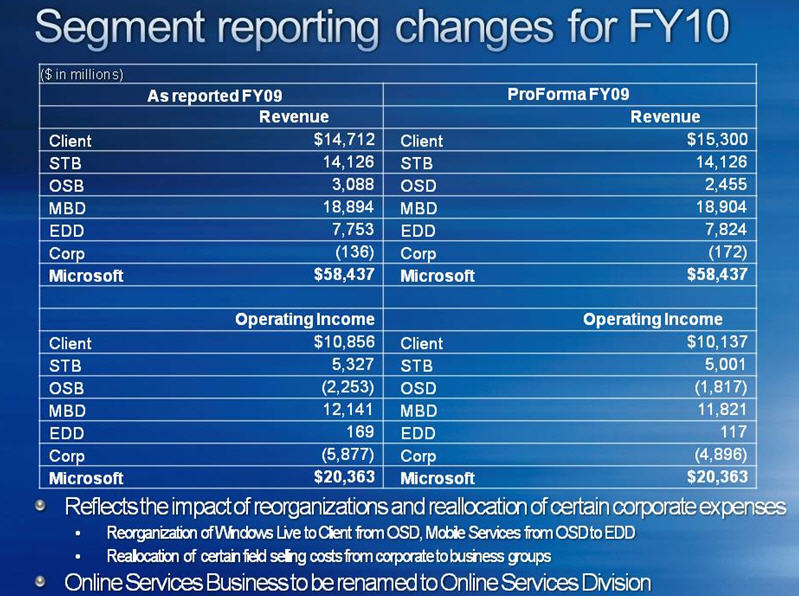Microsoft to detail planned changes in its fiscal reporting structure

On September 22, Microsoft executives will re-explain changes the company is making to the way it plans to report its fiscal 2010 earnings.
Microsoft officials mentioned these changes in passing when the company reported its fiscal Q4 earnings in late July. Next week, on September 22, Microsoft is holding a Webcast, aimed at Wall Street analysts and company watchers, to go over these changes in more depth. The new changes take effect for the first time when Microsoft reports its fiscal 2010 first quarter earnings on October 22.
(October 22 is also the launch day for Windows 7.)
The reporting changes are the result primarily of organizational changes made earlier this year. Among those changes:
- Windows Live moved from Microsoft's online business (which is now officially known as the Online Systems Division, rather than the Online Systems Business) to the Windows client unit.
- Mobile services were moved from the Online Systems Division to the Entertainment and Devices Division.
- Certain "field selling costs" were moved from the Corporate category to individual business units.
During its earnings call with analysts and press, Microsoft officials showed off a slide in July that explained how these changes would have impacted the last fiscal year's numbers if they had been in effect at that time. (Click on the image below to enlarge.)
Windows client revenues would have been $15.3 billion under the new reporting structure vs. the $14.7 billion that they were under the current one. The Online Systems Division revenues would have been lower ($2.5 billion under the new reporting system vs. $3.1 billion under the current one), but losses would have looked better ($1.8 billion under the new segmentation vs. $2.3 billion under the current system).
